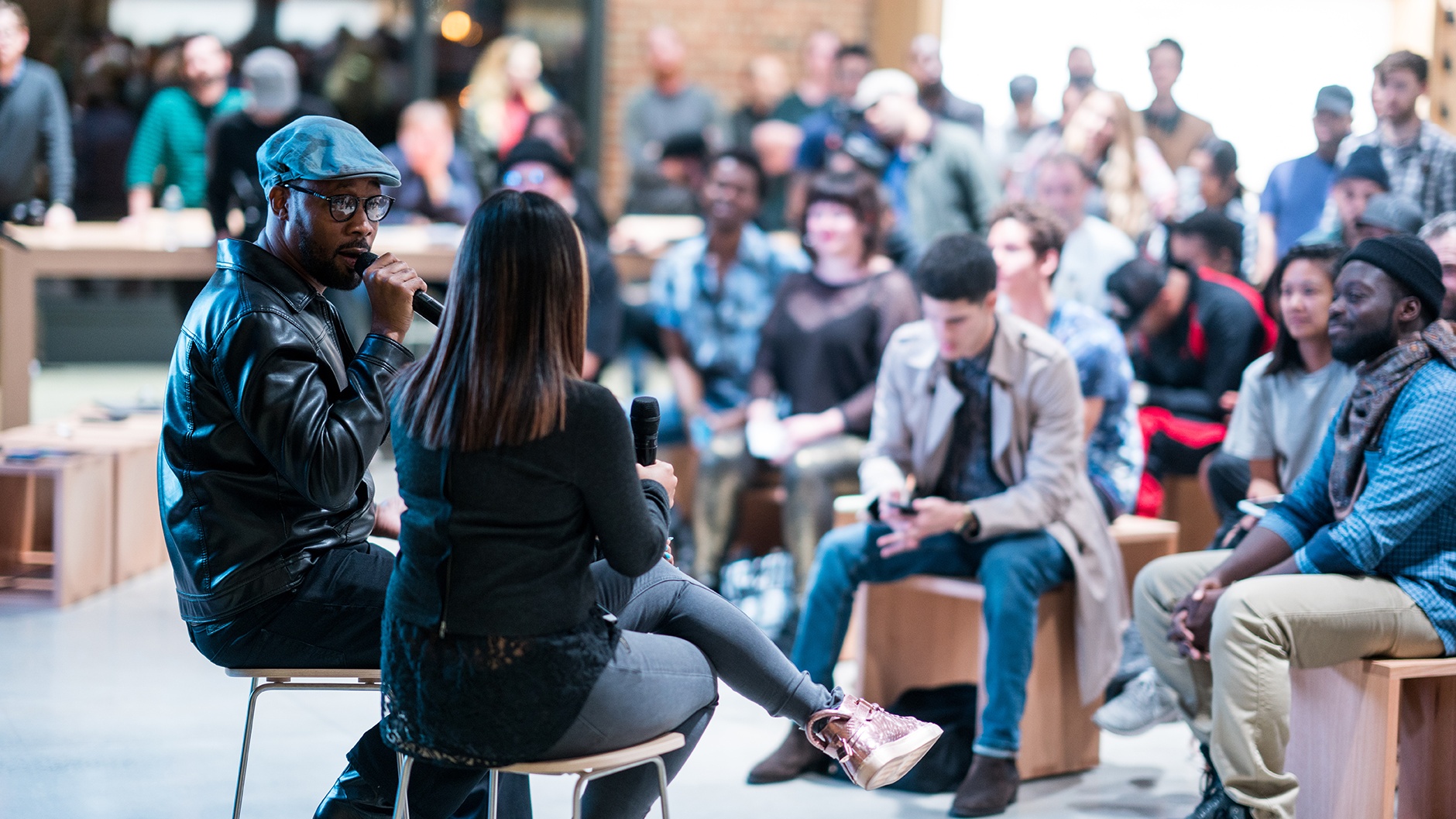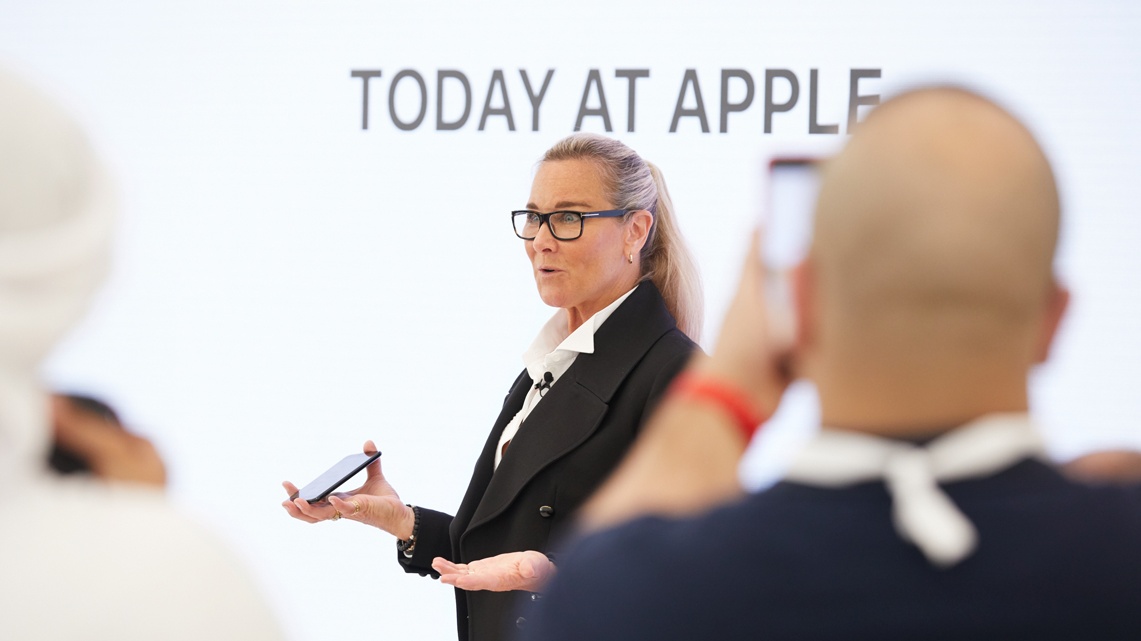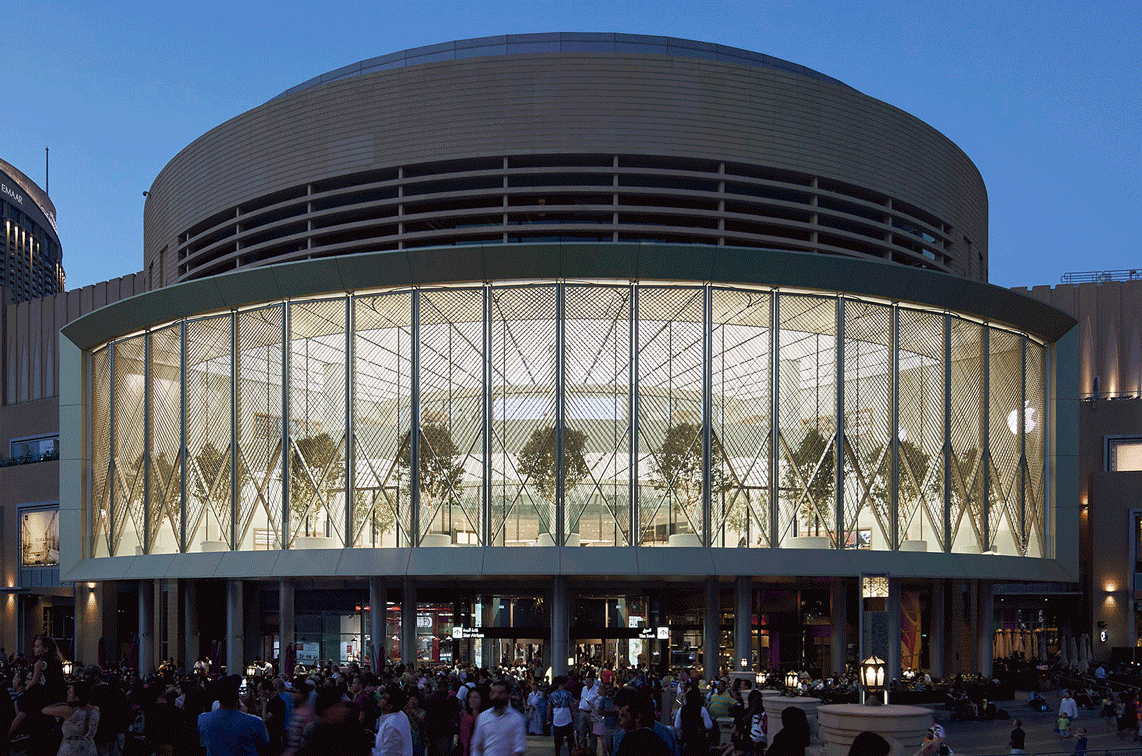From bright white gadgets to boutique: how the cult of Apple is changing
Apple is trying to position itself as an accessible luxury brand

Anyone entering the newly-modernised Regent Street Apple Store should instantly look upwards to see small cross between the huge doors, an emblem of the cathedral-like structure they’re now walking into and another demonstration of how Apple is moving further and further away from its days as a stereotypical electronics vendor.
Erica Robles-Anderson, a professor at New York University of media, culture and communication, dubbed Apple a cult when talking about the iconic nature of the brand, a description used multiple times in the media when talking about the fervent following built up by Apple.
But now it’s no longer a term to describe those dedicated to the world of white curved plastic objects. Apple has long been trying to move away from that moment in its history, less a cult and more an emotional connection that’s backed up by substantive reasons to stick with brand and keep pouring money into the coffers.
The reasons behind the reboot are clear: Apple is aiming to make its stores boutique in nature, an aspirational place that’s less about the product and more about how it makes you feel and how you’ll be able to use it, inciting a feeling of endearment from the moment you’ve chosen to walk in to its stores.
But instead of the front-end to an electronics warehouse, the new stores are contrived to be seen as destinations, a place to meet and hang out that happens to be near products. It’s a wonder there’s not a coffee bar in there too.
The biggest stores - the ‘flagship’ ones, although Apple rarely calls them that - are being slowly redesigned with a large video wall that serves as a backdrop to live music, artists, talks and contextual advertising of the products.

It’s combined with the addition of Forums in these larger stores, a place where people can just hang out, with Apple attempting to engender a sense of community through events and providing breakout areas where people can come and learn more about the products.
Sign up for breaking news, reviews, opinion, top tech deals, and more.
On top of the Forum events, Today at Apple is a regular series of workshops and activities, and is also a big factor in the overhaul of Apple’s retail experience.
These allow anyone to book a class on filming video on an iPhone, learn more about creating music with an iPad Pro or even bring in large, more in-depth projects to work on quietly, with program specialists ready to help if you need to perform a specific function.
App developers and small businesses are invited down for discussions about their products and how Apple can better serve their needs.
Of course it’s a way to shift more devices or software to these companies and users, but Apple is investing a lot of money to make these experiences free and therefore more accessible in a bid to improve the connection people have to its devices.
Zagging instead of zigging
The reboot of its stores is an interesting move for Apple at a time where you could understand it shuttering some of its outlets. An iPhone sales drop of 16% in the first quarter of 2016 was followed by flat numbers for the same period this time around as momentum build to the much-vaunted iPhone 8, and that’s alongside declining numbers of tablets and Macs and an uncertain number of Apple Watches sold.
The only real big upswing in revenue from its recent financial results was for services, with Apple Music and Pay providing a big boost to the brand’s coffers - and those are things that don’t need a physical outlet to show off.
Apple’s sales are rampant online, so you could argue it would be better served putting more products in large department stores and making them look shinier and more exciting at the point of sale, calling into question the need for dedicated retail outlets.
But according to eMarketer, Apple’s retail outlets made the most cash per square foot of any brand in the world in 2016, so clearly there’s still an appetite for a place to go and buy your new iThing.
And Apple is doubling down on that experience, pouring money into large-scale revamps of its stores in London, Dubai, Chicago and San Francisco among many others, and this week extending the Today at Apple scheme to all of its nearly-500 stores around the world.
The smaller venues won’t have the large video screens and as many regular events, but Apple wants them to be a focal point for the community, with programs like guided walks taking users around their city with professional photographers to learn more about how to use their devices.
It’s no coincidence that this overhaul is happening under the eye of Angela Ahrendts, Apple’s senior vice president of retail and online stores. She's the person who, as CEO, oversaw the rebirth of Burberry from its massively-counterfeited days back to a prominent, high-end fashion brand.

She revamped the Burberry brand to respect and embrace the trend of online shopping, and brought that ethos into the physical bricks-and-mortar stores to create a destination.
A quick look at the modern Burberry flagship store down the road in from Apple's Regent Street store shows an easy blueprint: large video screen flanked by staircases, mirrors that come alive and iPads aplenty, rather similar to the layout of Apple’s new outlets.
With all these newly-modernised stores, Apple is no longer selling gadgets, but an experience. It’s a boutique that happens to sell tablets and phones. Luxury for the sake of being luxurious to evoke grandiose emotion when you walk in.
In San Francisco it’s the enormous, tailored glass sliding doors on the front of the building, floating glass staircases and lines on the floor, which match with the line of the iconic square in the foreground of the shop, that are so striking.
In London the building is filled with smooth carved stone, chosen and shipped in especially for this creation, used for the pillars and staircases that surround the space.

Dubai has solar wings on the front which cool the store in the heat but open to encourage users onto the terrace. A future Apple Store in Chicago is planned to open up a new space onto the waterfront in the same manner of encouraging people into the shop.
But while each new store has its own architectural identity, there are common themes among all of them. The trees that line the stores I visited in London and San Francisco have seats so Geniuses can sit next to customers under the foliage on seats - so specifically designed that they even have the same curvature as the iPhone.
Living walls of greenery adorn the inside of the Regent’s Street shop, and a 50-foot version lives at the Union Square store next to the public space Apple has created at the rear.

Power sockets appear with the wave of a hand in the middle of the wooden table, and disappear equally quickly.
The rows beside the tables of products are now called Avenues, “inspired by the window displays along a boulevard that dynamically change with the season” as consumers walk past window dressings of accessories.
Even the temperature and lighting conditions are adapted throughout the day to match the outdoor conditions. "It all starts with the storefront — taking transparency to a whole new level — where the building blends the inside and the outside, breaking down barriers and making it more egalitarian and accessible,” said Sir Jony Ive in a statement about the redesign of the Apple Store in San Francisco.
It’s Apple in the most Apple way possible, the hand of Ive obvious throughout the design ethos of the new stores. It’s a surprise that the brand hasn’t made an app that can follow you around the store, Sir Jony whispering his design ideas contextually as you wander through the space.
The new Apple outlets feel like the complete antithesis of 'normal' retail stores, where the goal is to throw as many products at your eyes as possible.
It’s hard to see your local vegetable stockist offering you the chance to walk the streets checking out new ways to eat your greens in the same way Apple is promoting local walks to learn how to use a phone camera more effectively.
On the ground
What Apple is trying to do is combine luxury with an actually enjoyable after-sales service.
I visited the Regent’s Street Store last weekend to try out one of the workshops, and the Apple employee who was leading my workshop quickly worked out that I knew how the camera on the iPhone functioned and started just chatting to me about how he was part of the Today at Apple program, without knowing I was writing anything on the subject.
He suggested some other workshops I might like while still making sure I had all the basics of the phone down, and wrapped up the session early when we’d reached the end of what was needed.
I then headed down to the Forum in front of the large screen and got chatting to the girl who was sketching using the iPad Pro, with the impressive results on the video wall behind us.

Around me people were video chatting or talking to Apple Store employees about products on small wooden stools, and at no point was I approached to be forced to buy anything.
As a consumer, it’d be hard not to be impressed by the lack of sales push and the amount of information and help on offer for free, despite it being a busy Saturday in the store.
What was impressive was how much each store worker knew about the place. Where in other phone shops I’ve been told all manner of hastily made-up nonsense from bored weekend workers, those I spoke to at the Apple Store knew things like why the seats were designed in a certain way and seemed to relish the roles they held.
And Apple seems to have finally fixed one of the bigger issues with 'Today at Apple' - how hard it is to find out what's going on. With the launch around the world, it's created a dedicated site to let you know what's going on near you, rather than having to delve through the store's website.
It's mostly workshops with a few events thrown in, and hopefully Apple will begin promoting it better in-store so people know about it, but if the brand is going to make this aftercare an integral part of the store experience, it needs to let people know about it.
Apple for the future
For those that pointedly dislike Apple as a brand, these Store revamps are going to do nothing to bring them into the fold. But for the thousands who have already bought an iPhone, Macbook or iPad, there are real and genuine reasons to come back into the store and not even look at newer things to buy.
Apple wants to reiterate that its products and services are a complete package, a way of life to be aspired to that you don’t get when you’re walking past rows of discounted TVs.
It no longer wants the latest iPhone to get you into the store, but the entertainment that draws you in as you walk past.
Instead of focusing on pushing people to purchase instantly, Apple is playing the long game with its new stores. It’s trying to create an atmosphere, rather than products, that people want to browse, which is why it’s trying to associate the boulevards of Paris with a corridor to walk down beside a table.
Will it be the shot in the arm to iPhone sales Apple wants? Probably not - if that happens it won’t be anything to do with whether you can buy an iPhone 8 directly nearby.
But by re-imagining itself as a luxury boutique brand Apple is trying to create (or strengthen) an emotional connection to the products, a chance to renew customer’s ties to the company and increase the trust in its services, keeping them buying new Apple gadgets and plans for years to come.

Gareth has been part of the consumer technology world in a career spanning three decades. He started life as a staff writer on the fledgling TechRadar, and has grew with the site (primarily as phones, tablets and wearables editor) until becoming Global Editor in Chief in 2018. Gareth has written over 4,000 articles for TechRadar, has contributed expert insight to a number of other publications, chaired panels on zeitgeist technologies, presented at the Gadget Show Live as well as representing the brand on TV and radio for multiple channels including Sky, BBC, ITV and Al-Jazeera. Passionate about fitness, he can bore anyone rigid about stress management, sleep tracking, heart rate variance as well as bemoaning something about the latest iPhone, Galaxy or OLED TV.